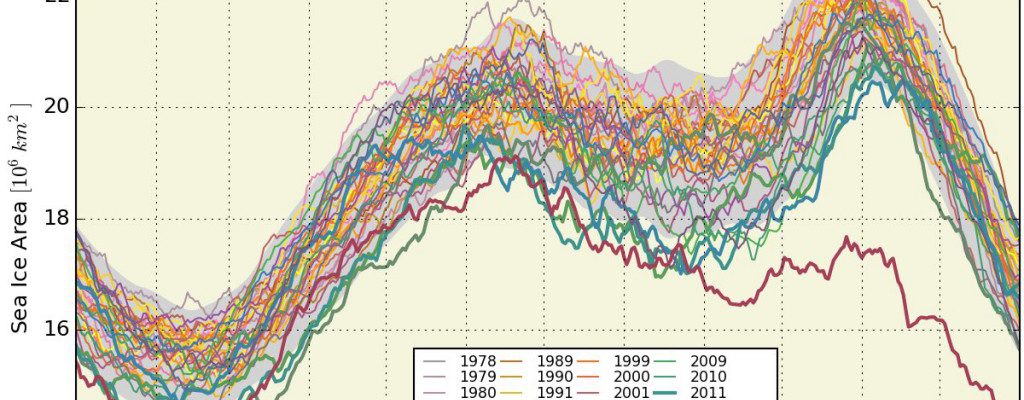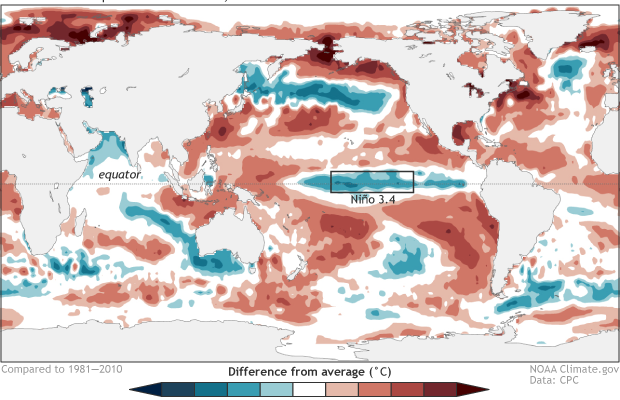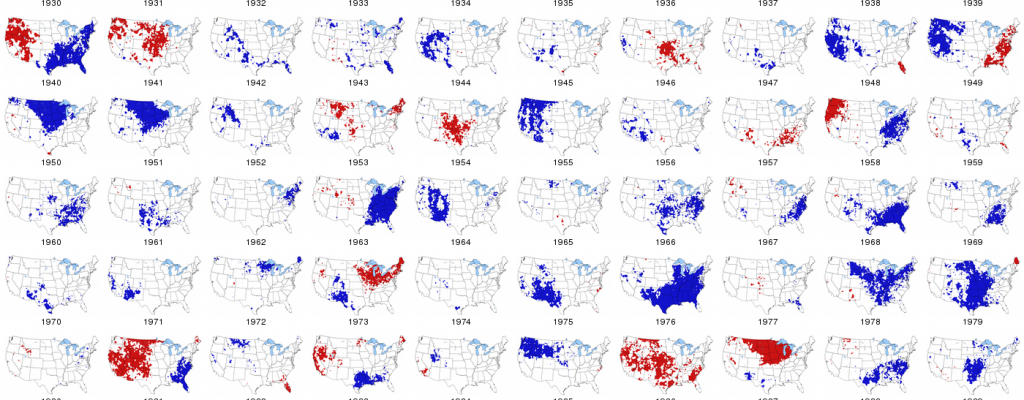Climate and Ag in the news
-

NASA’s Scientific Visualization Studio has a couple of graphics showing changes in the frost-free regions of the US for March and April. The graphics clearly show the expansion of frost-free areas in the Midwest and Great Lakes during those months, although they have more limited value for us in the Southeast. It would have been…
-

In previous blog posts I have noted the unprecedented decay of sea ice over the last few years and showed a graph which indicated a rapid decline of global (combined Arctic and Antarctic) sea ice this year. Here’s an update of the chart (most recent year in red). Note that the trend towards unbelievably low…
-

NOAA released their January 2017 update for ENSO (the oscillation that is the combination of El Niño and La Niña) this week. It shows that weak La Niña conditions still remain in the eastern Pacific, but that they are expected to go back to neutral conditions within two months. Even though it will be technically…
-

Scientific American has an interesting short article today about links between the record warm Arctic temperatures and the jet streams which affect our weather patterns here in the US. You might enjoy reading it. The link is at https://www.scientificamerican.com/article/the-arctic-is-getting-crazy/.
-

I am not a Twitter user, since I spend too much time on social media already, but if you are and you enjoy weather content, you should check out this list of the best 100 weather- and climate-related feeds on Twitter. You will recognize several of the sites, since I steal from use their Facebook…
-

Deke Arndt of NOAA’s National Centers for Environmental Information provided the following interesting commentary about one of the graphs in the national climate summary that came out yesterday: As far as temperatures go, and especially “extreme” temperatures go, minimum temperatures (a.k.a. “Tmin”, “morning lows”, “overnight lows”, etc.) are increasing more than maximum temperatures (a.k.a. “afternoon…
-

Even though it hit 70 F in Athens today and warm temperatures dominated conditions in the Southeast today, I was interested to read this list of the ten worst all-time ice storms in the US from Weather Underground. You may have lived through some of them yourself, since several were in the Southeast. You can…